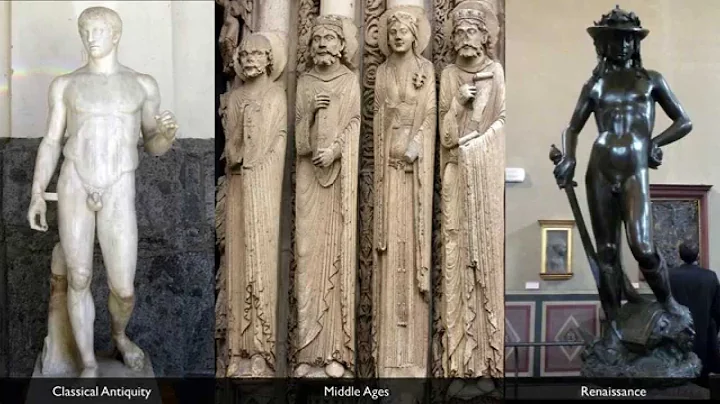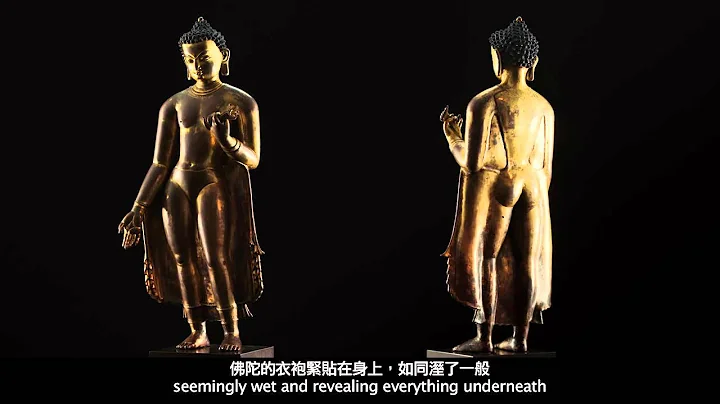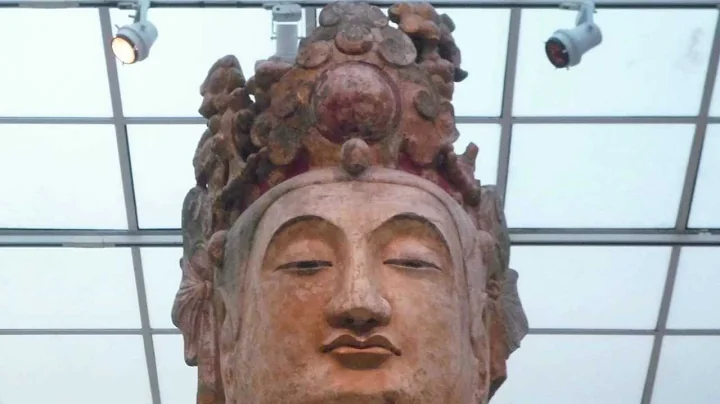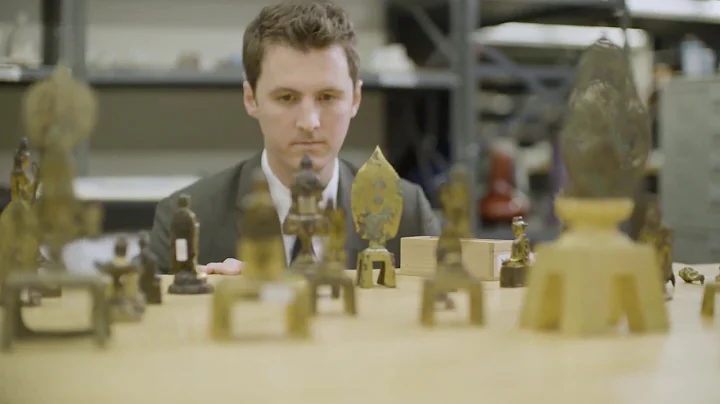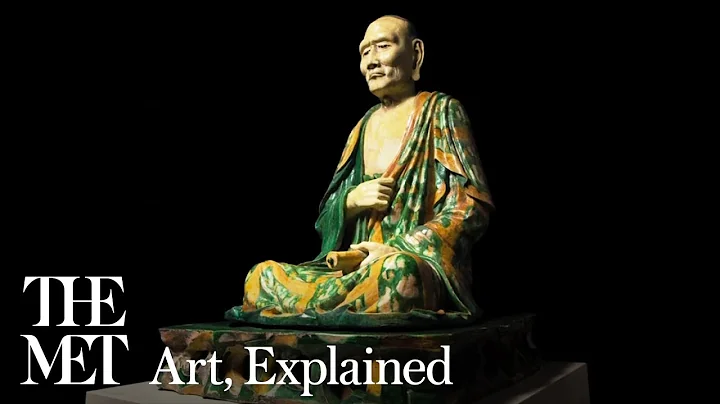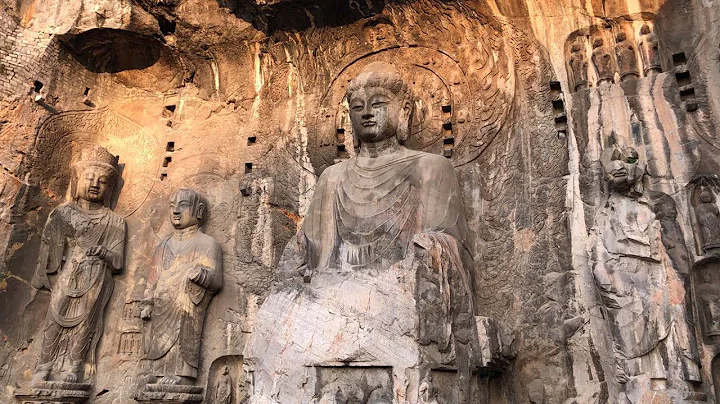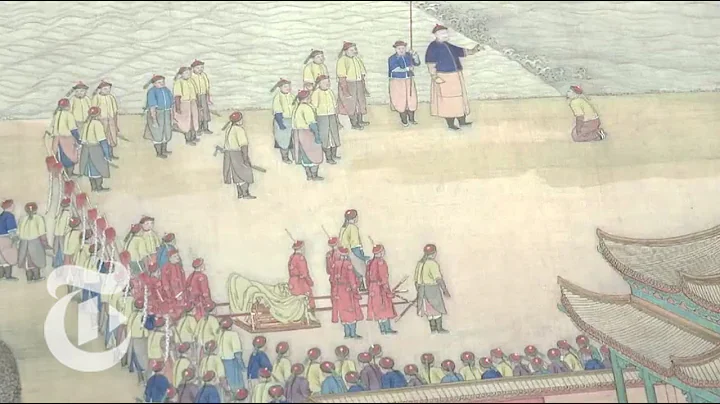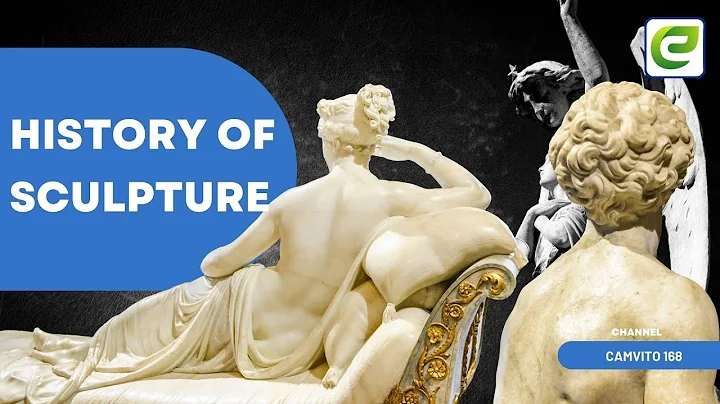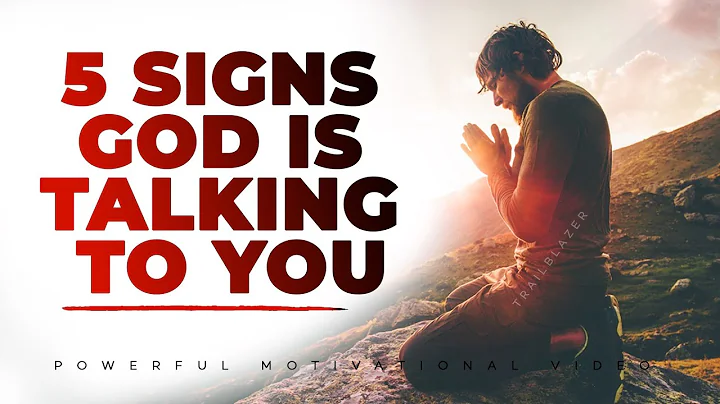Swedish art historian Osvald Siren has an excellent comment on Chinese sculpture and Western sculpture. He compared Michelangelo's works with some Chinese Buddhist statues. For example, try The Dragon Gate Buddha is placed next to the Moses statue. It can be imagined that on one side there are complex changes in sitting postures, protruding muscles, and dramatic pleats that emphasize dynamics and effort; on the other side there is complete rest, pure forward posture, with legs crossed and arms hanging close to the body - this is " "Self-reflection" gesture, works like this make people realize that although Renaissance sculptures elevate the portrayal of personality to a very high level, they are just some superficial ripples above the abyss of life.
Perhaps Mr. Xilongren has a preference for Chinese Buddhist statues, but it illustrates a common feature, that is, Chinese Buddhist statues have transcended the simple look and feel pursued by the physical form and traditional modeling language, and have been sublimated to a metaphysical level.
There is a little story. Mr. Liang Sicheng once picked up a little fat foot from the Tang Dynasty in the mountain behind Foguang Temple. He couldn't put it down and often took it out to show it. He also wrote "Don't hold it for a while" on the back. It can be seen that in Among the Buddha statues, the remaining parts of the Buddha's hands and feet also contain strong artistry and a huge amount of information.

For the Buddha's hand, the modeling methods and artistic conception of Chinese painting are perfectly integrated into it, which makes the physical beauty of the hand unique, detached and ethereal. The perfection and enlightenment pursued by Buddhism are precisely demonstrated through these unique expression methods.

A standing statue of Bodhisattva from the Sui Dynasty in China collected by the Boston Museum
Buddha's hands are equivalent to Buddhist sign language. The changes and combinations of different gestures have different meanings. After the changes and evolutions of the past dynasties, they have formed an iconic symbol of Buddhist culture. , collectively called handprints. The picture below is a few common handprint diagrams simply drawn by the author for reference.

The formation of artistic style depends on the background of the era in which it is located. Therefore, the style of Buddha's hand will change in different eras, which is also closely related to the aesthetics of the time. For example, the Buddha's hands in the early Northern Wei Dynasty were flat and clumsy, those in the Eastern Wei Dynasty were slightly rounded, and those from the Southern and Northern Dynasties to the Sui and Tang Dynasties were extremely round and full. After understanding these basic characteristics, the approximate age of a statue can be determined based on the hand shape characteristics alone.

Northern Wei Dynasty: flat and clumsy, rather dull and uncoordinated in proportion.
Eastern Wei Dynasty: Gradually transitioning from dullness to mellowness.
Northern Qi : round, elastic, well-proportioned.
Sui and Tang Dynasties : well-proportioned and full-bodied, especially in the prosperous Tang Dynasty, with exaggerated momentum and smart lines.
The common characteristics of Buddha's hand
1. It is not completely subjectively shaped according to the laws of nature.
Compared with the realism of Western sculptures, Chinese sculptures have a certain degree of subjective space due to the lack of objective research on human body structure . The structure of the Buddha's hand has been summarized and refined. In terms of the degree of bending and relaxation of the fingers, the arc lines of the back of the hand, and the lack of obvious knuckles, blood vessels and muscles (except for the Lux hand), they all violate physiology. Shaping of structure. However, it is precisely this that makes Chinese sculptures full of relaxed and comfortable lines.
2. General curve.
Buddha's hand adopts an arc structure as a whole, and the lines are very rhythmic and full of rhythm.
3. Full of soothing and relaxing emotions.
The curved lines will make the whole movement look relaxed and quiet, and you can even feel the integration with the world. That is, according to Buddhism, all living beings have the wisdom and virtue of the Tathagata, and they can understand their minds and see their nature.



Things held by the Buddha's hands
1. Plants such as lotus and poplar branches, among which the lotus is the most common. Because of its ability to emerge from the mud without being stained, it has long been compared to the Dharma or the incarnation of the Buddha by the Buddhists. The lotus platform also has an incarnation in Buddhism. The function of life, such as children, gods, etc., are born from it, which is called lotus flower.
2. Treasure vase , purification bottle, Dharma wheel and other Buddhist instruments have different meanings respectively. Most of the people holding the purification bottles are Guanshiyin . The water stored in the bottles is used to purify hands, which also means cleansing; holding the Dharma wheel means that the Dharma wheel always rotates and the Buddha Dharma is eternal.
3. Box type, square or round box. The Buddhist scriptures of ancient India were copied on the leaves of a kind of tree called Bedoro and then connected together with silk fabric and placed in a box. Therefore, the box is the representative of Buddhist scriptures.
There is also a type of weapons such as knives and swords that will not be described for the time being.

Buddha's hands from Wei, Jin, Southern and Northern Dynasties to Sui and Tang dynasties


Bodhisattva holding lotus in Northern Wei



Bodhisattva in late Eastern Wei/Northern Qi Holding the reincarnated boy


The Bodhisattva of the Eastern Wei Dynasty holds the circular instrument




The Bodhisattva of the Northern Qi Dynasty




Bodhisattva of the Northern Qi Dynasty holds a magic weapon


Bodhisattva of the Northern Qi Dynasty carries a belt


Northern Qi Dynasty Bodhisattva Holding a lotus

Northern Qi/Sui Bodhisattva portable pure bottle


The Tang Dynasty has full and round lines
When we appreciate the perfect hand carvings in the ancient Greek and Roman eras, we can feel the blood flowing inside, and even feel that it is A living body with warmth, and when you contemplate a Chinese Buddha's hand, you will be able to gain a perfect state of mind, as well as detachment and tranquility. This is exactly the Dharma joy feeling of Buddhism, especially after experiencing thousands of years of experience. After a hundred years of baptism, they exude a sense of vastness and emptiness. Although the Buddha's hand is only a small part of the Buddha statue, from this perspective, it also contains Buddhist thoughts and silently conveys the grandeur of Buddhism and the beauty of the Pure Land.
